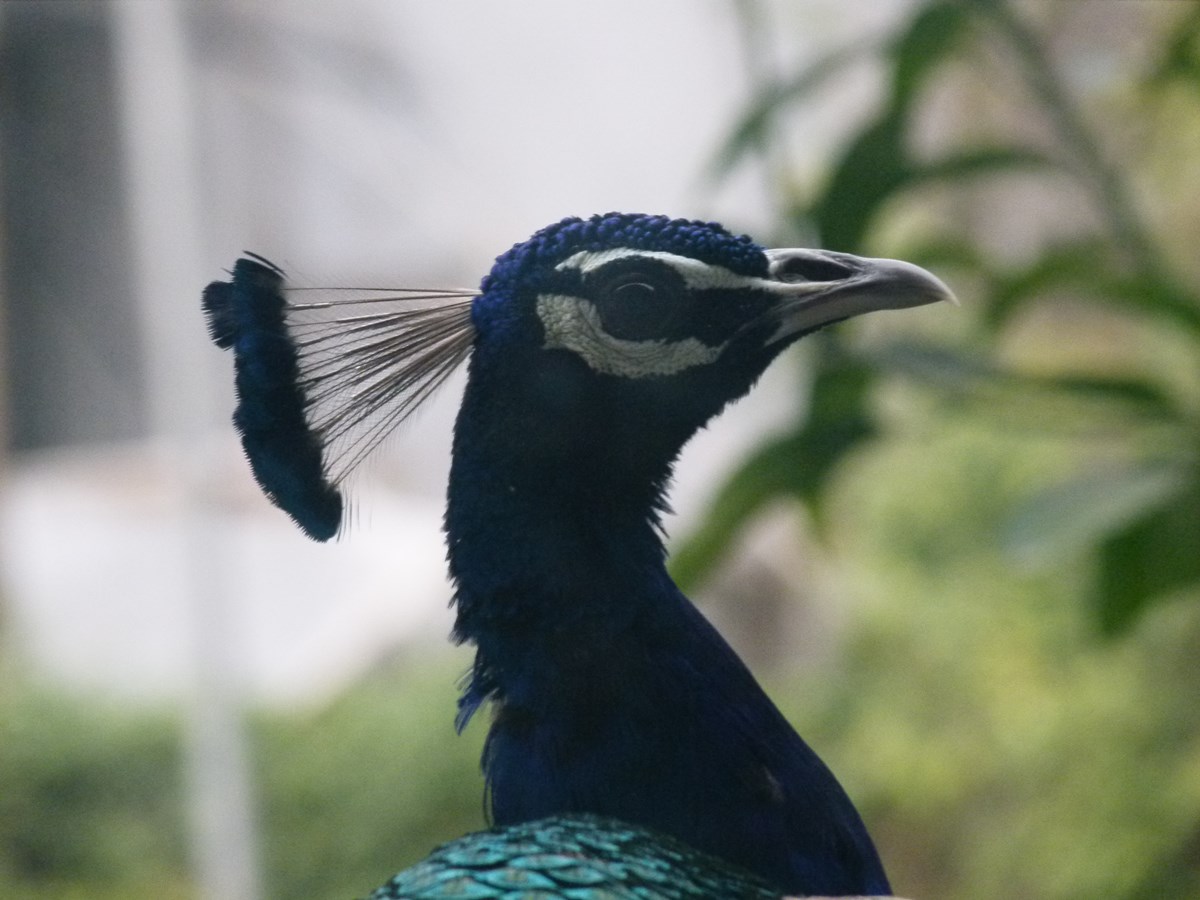What role does the peacock’s crest play in their love lives?
Peacocks stumped Charles Darwin because they squared up against his theory of natural selection. But what about their crests? Is it merely ornamental or does it have a role to play in their romances?
 Peacocks drove Charles Darwin nuts because they squared up against his theory of natural selection. (Photo credit: Ranjit Lal)
Peacocks drove Charles Darwin nuts because they squared up against his theory of natural selection. (Photo credit: Ranjit Lal) This is the season when peacocks are at their flamboyant best. They carry their trains — reminiscent of richly embroidered tapestries – with care. (They would do well to hire a couple of page boys to hold them up!) Surrounded by a bevy of dun-coloured, apparently disinterested ladies, they prance around haughtily. If two gentlemen happen to meet, they duel (but are usually careful not to really make contact). The winner will, with a flourish, open up his train like a Japanese paper fan, and waggle his rear and russet wings, slowly pirouetting. Thunder rumbles and they shriek out their love cries, “May-yew, may-yew, may-yew!” making you wince. And they can dance all day: one gentleman I observed danced from 9 am in the morning to 7 pm in the evening from the top of a disused well in the neighbouring cemetery.
Peacocks drove Charles Darwin nuts because they squared up against his theory of natural selection. A bird with such an encumbrance surely ought to be easy to catch, and so easy meat for any predator. Yet, there they were, and the ladies seemed to love the ones with the most extravagant trains. So, then, the theory of sexual selection came into play.
This was all very well, but scientists being scientists could not stop asking questions. The train and fancy display and dance were par for the course, but what was the function of the coronet-like crest that the peacocks (and peahens) wore? Was it merely ornamental? Certainly, I would imagine a peacock without one would appear decidedly odd and possibly put off the ladies. But why was it there in the first place?
When scientists began investigating, they obtained crests of the peacocks from zoos and aviaries and subjected them to rigorous testing. They knew that peacocks shivered and shook their tails and wings as they danced, so they mounted the crests on what one could call a wobble machine and began wobbling them to and fro. When the wobbles reached twenty-six wobbles per second (or 26Hz) the crests got extremely excited and wobbled harder. This was resonance – the natural frequency of the crest. (Everything has its own natural frequency, even suspension bridges and when they swing at their natural frequency, can magnify that swing to the extent that the bridge collapses.)
The next step was obvious. Scientists measured the frequency at which the peacock’s tail and wing feathers wobbled and shook as they danced. And, hey presto, they found that the frequency was exactly the same, 26 Hz. The scientists took recordings of an actual peacock “rattling” his tail and played this to the mounted crest – and it began shaking excitedly, too. And it wouldn’t do so for other recordings, including those of pop songs. So, this couldn’t be a coincidence.
 When scientists began investigating, they obtained crests of the peacocks from zoos and aviaries and subjected them to rigorous testing. (Photo credit: Ranjit Lal)
When scientists began investigating, they obtained crests of the peacocks from zoos and aviaries and subjected them to rigorous testing. (Photo credit: Ranjit Lal)
So, did it mean that when a peacock danced before his lady, apart from the visual display and shenanigans, the lady actually felt vibrations emanating from the gentleman’s crest too, because they made her crest vibrate in response? And though I’ve never seen this, apparently sometimes the ladies too display back to the gentlemen, so could they also be sending vibrations back to the gentlemen dancing for them?
Scientists also discovered exactly how this happened. At the base of every crest feather was another short wire-like feather with a tufted tip called the filoplume (many birds have these; they are very important for flight stability and orientation) which is exceedingly sensitive. When the crest feather wobbles and shakes, it may nudge the filoplume, which fires off a nerve ending at its base.
Even so, what does this mean? We still don’t know. Do the vibrations excite the ladies more than merely a physically extravagant display does? At the risk of being anthropomorphic, are these secret ‘love vibrations’ being sent out? You know, of the kind that go out when you look deep into your sweetheart’s eyes and she or he looks back into yours – and neither of you have to say or do anything at all after that, except maybe blush?
Or could it be that if a lady is playing hard to get and not even glancing at the dancing gentleman and pecking at the dirt instead, she can’t help picking up his vibes through her crest, and be moved enough to change her attitude? (Like you don’t have to look at an outrageously dressed rockstar to be impressed, but may be moved by his voice and music?)
Then again, I’m wondering: If all peacocks’ tails and crests resonate at 26 Hz and they’re sending out vibrations at this frequency to all other peahens, then does it matter to them who is at the receiving end? We do know that the ladies prefer gents with the most extravagant tails (like a girl would choose a guy with a yacht rather than a rowboat), but is there something more in the vibrations that we’re not cottoning on to?
The best thing about investigating the wonders of nature is how one question invariably leads to another and then another. And yes, while scientists are known to do all sorts of weird and unpleasant things to animals to achieve their ends, it appears that no peacocks were harmed during these experiments – because the crests were taken from dead ones. So, there really were no crestfallen peacocks left wandering around, wondering why their love lives were in such shambles.



- 01
- 02
- 03
- 04
- 05




























